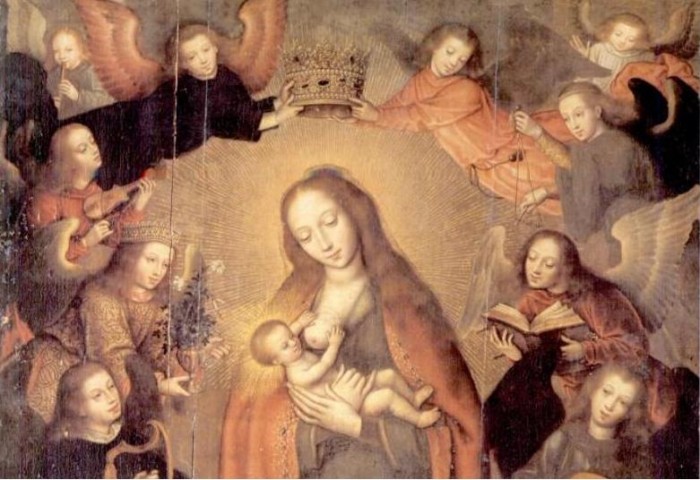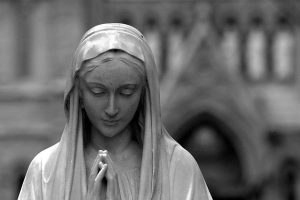
Catholics, until this day, maintains that Mary is rather honored not worshipped. One can always, at the apparent view, see the importance of Mary in Christian mythology. Her status has gradually grown from a simple human woman who was privileged to bear the Messiah, to a figure that has developed more divine qualities.
Parallel to the story of Jesus conceived without sin, orthodox tradition also suggests Mary was also conceived without sin to her poor parents named Joachim and Hannah.
When a person is famed to have been conceived without human sexual intercourse, the very essence of their humanity falls under doubt – this was one of the few ladders the character of Mary had to climb in her journey towards spiritual importance or more correctly, Godhood.
The status of Mary as a Goddess is demonstrated albeit subtly by several Marian invocations throughout Christian prayers. An example is the Catena invocation of the Legion of Mary “Who is she that comes forth as the morning rising? Fair as the moon, bright as the sun, terrible as an army set in battle array?
Mary, in this invocation, is described in a Godly grandeur befitting Motherly Goddess of import.
This is a grandeur inspired or more correctly is a blatant copy of reverence ascribed to the Mother Goddess of the Egyptian holy family – Isis.
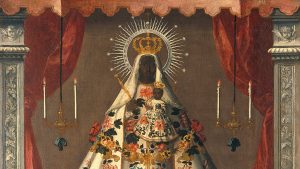
Egypt has always been an essential location in biblical stories. Jesus spent a more significant part of his childhood in Egypt after Joseph had to flee with Mary and her newborn son to avoid being murdered by Herod.
Christianity saw the end in the worship of Isis, but the veneration of Mary incorporated the roles of Isis, her grandeur, iconography, and position into Christian mythology. One can rightly point out that in the real sense, the worship of Isis didn’t end; it was repackaged within new mythology and ascribed a new name.
The Goddess Isis is still today revered in the person of Mary.
R.E. Witt has argued that the decline in the worship of Isis and the veneration of Mary was not a coincidence. He has suggested that the new converts into Christianity who has through their lives, worshipped the Goddess Isis, saw within Mary, a new figure that embodies the fundamental position of Isis within the Godhood primarily. And so, their worship of Isis was morphed into a passionate adoration of the New Isis – Mary.
Horus is the Son figure in the Egyptian Triune Godhood, The Son and heir of Osiris, A position held today by Jesus Christ, who is the son of God the Father.
Isis is the mother of Horus, a position today held by Mary as the mother of Jesus.
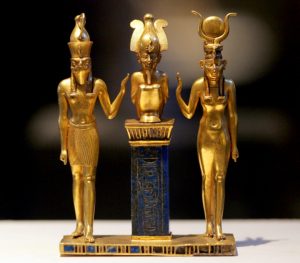
In the Trinitarian conception, when judged through importance and veneration hierarchy as observed to the person of Mary, one could be right to argue that Mary is the unofficial third person of the Christian trinity.
Isis, through antiquity, is known for her role in guiding the dead to the afterlife as she guided her husband, Osiris, who was killed by his brother Seth.
Mary, as of today, still retains the character of an intercessor for the dead. Her role to the dead is much recognized that it is of importance to human salvation. “Pray for us sinners, now and the Hour of our death.”
Isis bore the title “Mother of the God” which today has remarkable similarity with title ascribed to Mary as “Mata Dei (Mother of God)”
Isis’ title as “Queen of Heaven” retained by the Marian title litany also as Queen of Heaven.”
Mary also owed her iconography greatly to the person of Isis. The most popular iconography of Marian veneration is the Madonna. An image of Mary, bearing the child Jesus in her laps feeding him with milk from her bosom in tender mother and child bond.
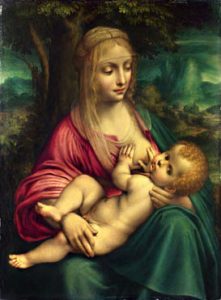
This is a literal adoption of a much older image of Isis, bearing the little Horus on her lap and feeding him with milk from her bosom.
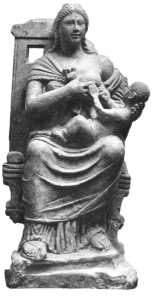
Such parallels are more intentional than they are coincidental.
Just like Isis, Mary also holds the reputation for the protection of sailors and plays a role in agricultural success.
Mary’s role as an intercessor or intermediary between humanity and Jesus is another adoption of Isis’s intermediary role between the Gods and humanity.
Other notable similarities include:
- Isis was the most important Egyptian Female god in ancient Egypt. The Virgin Mary is the most important female figure in Christianity
- Isis is the mother of Horus. Virgin Mary is the mother of Jesus
- Horus was born without a father (Osiris was already dead), this closely resembles Jesus being born from the Holy Ghost without a father
- Both of them are depicted in art holding and caring for their baby gods during infancy
- At infancy, Isis protected Horus from his evil uncle, while Mary protected Jesus from the infanticide fury of King Herod
- The role of a merciful mother figure is identical in both cases
- Both held the title “Lady of Light” because they gave birth to the light. Horus being the god of light, while Jesus is the light of the world
- The solar disk of light above Isis head closely relates to the Halo of light above Mary’s head
The similarity between Isis and Mary is rather apparent in every way. Another testament to the unoriginality of Christian mythology. The formation of Christian theology borrows heavily from African spirituality, which, of course, it has worked so hard to replace. It begs us Africans to consider what we have, the wealth of spiritual history we possess. A myth that has, while being relegated into the fibers of history, retains a resounding influence through contemporary theologies of newer spiritualties.
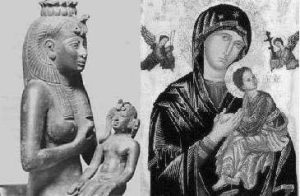
The Goddess Isis is not dead. She is still today, worshipped. Just as the disguise of aesthetics or name do not change a dog into a cat, the change of Isis into a new character within a newer mythological plot, does not change anything about the Goddess.
We are still, to this day, witnessing the veneration of Mother Isis in the person of Mother Mary.

